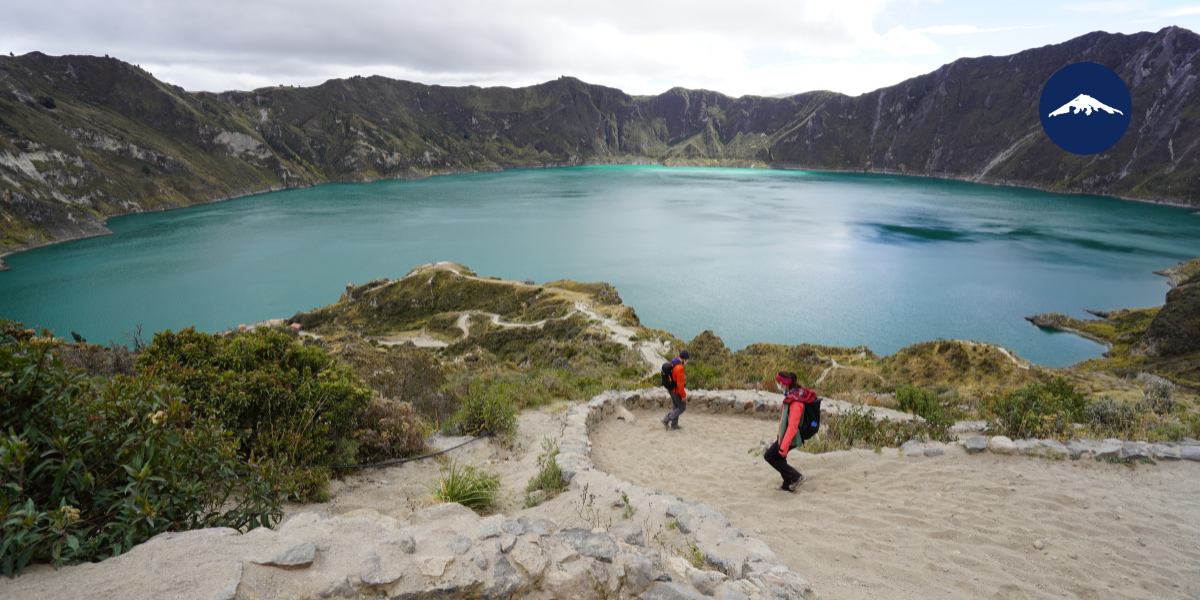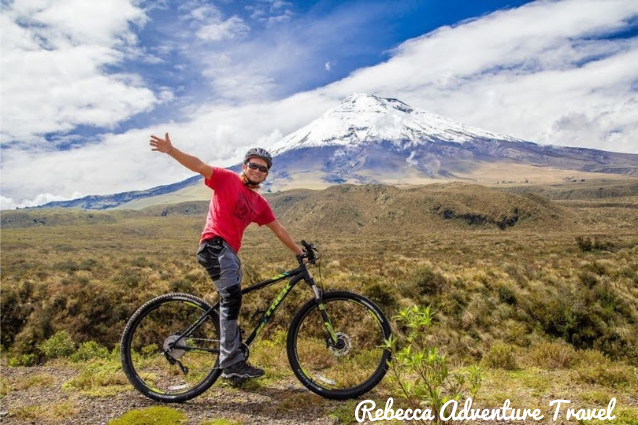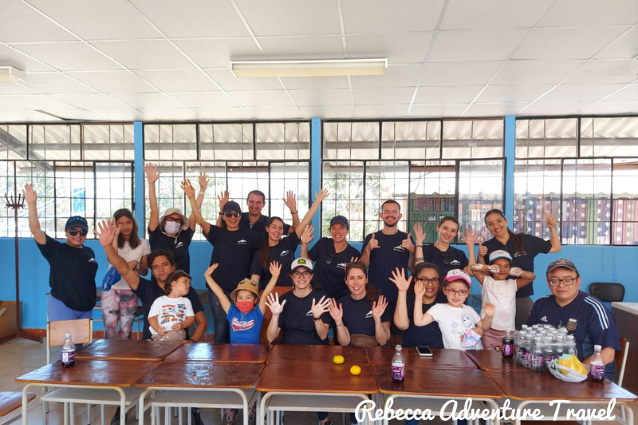8 Ways to Make Your Travel More Sustainable in Latin America

Is it possible to travel in a sustainable way in Latin America? Yes! First, Latin America has many protected natural reserves. Second, the region has more than 300 national parks and reserves. Also, they have jaw-dropping and magical landscapes, as well as an important cultural diversity. Moreover, Latin America is an unexplored tourist destination worldwide. Natural areas and national parks are still protected. Thus, countries are starting to implement new environmental and preservation practices.
For instance, the Galapagos Marine Reserve is one of the largest and most biologically marine areas in the world. In January 2022, the Ecuadorian government expanded its coverage to curb overfishing, establishing an act of responsibility and respect towards nature.
How to travel responsibly and sustainable in Latin America
Latin America is globally known as a megadiverse region. It showcases cultures with a variety of ancestries, ethnic groups, and races. Even so, just in Latin America, there are 12 countries with different aspects of financial and development statuses.
Even though tourists can find similarities within the region, especially because Spanish is spoken in the majority of countries, each territory has a diverse set of cultural traditions. Then, its history, traditions, food, ethnicities, and syncretism make Latin America one of the most diverse regions in the world.

Latin America is a megadiverse region.
Therefore, how can sustainable travel and tourism contribute to the region’s development?
- Keep it local: trust local guides when it comes to buying art, and crafts, and finding the best restaurants.
- Choose a travel agency that is committed to sustainable tourism.
- Respect natural places and wildlife.
What are sustainable travel and tourism?
Tourism is a transversal part of modern society. People enjoy traveling so much because it involves experiencing life in a new, unexpected, way. Even so, there are scientifically proven benefits related to traveling abroad. Travel can make you healthier, relieve stress, enhance your creativity, boost happiness, and lower the risk of depression.
Even though traveling has so many benefits, mass tourism has negative impacts on climate change. Therefore, in the past years, a new travel style has gained traction: sustainable tourism.

Sustainable tourism has gained traction in the past years.
Sustainable travel is a redefined model that aims to lower the negative impacts of tourism on the environment, the economy, and local communities. Thus, responsible tourism includes:
- Protecting the environment, natural resources, and wildlife.
- Working with local communities.
- Creating authentic tourist experiences, while conserving a location’s heritage.
- Creating inclusive opportunities for tourists as well as communities for mutual benefit.
Check our community adventure tours
Why is sustainable travel important?
Traveling sustainably creates opportunities with minimal impact as well as positive benefits for sustainable travel destinations. For instance, the environmental benefit of sustainable tourism is the creation of natural parks. Also, it can increase consciousness in society for natural protection and conservation.
Since 2005, the United Nations Environment Program established 12 main goals for sustainable tourism:
- Economic viability
- Local prosperity
- Employment quality
- Social equity
- Visitor fulfillment
- Local control
- Community wellbeing
- Cultural richness
- Physical integrity
- Biological diversity
- Resources efficiency
- Environmental purity

Traveling sustainably is an opportunity to create opportunities with minimal impact.
Sustainable travel is important because it can be detrimental to the development of the Latin American economy. Moreover, local communities that rely on tourism, need to protect their environment and biodiversity. Thanks to the newly developed consciousness towards the protection of the environment, more tourism businesses are transitioning to achieving sustainable goals.
Therefore, destinations in Latin America are becoming responsibly driven by focusing on high-value tours. For instance, according to Euromonitor International’s Sustainable Travel (ST) Index, Peru is the most sustainable destination in Latin America. The country has expanded its tourism offer including Machu Picchu, creating alternative options that include cultural heritage, gastronomy, and art.
Check our Peru and Ecuador tours
How to implement a sustainable travel and living lifestyle
Implementing sustainable travel and living is easier than you think. When you choose a slow travel experience, you’re not only giving back to local communities but also preserving the destination.
Learn more about our responsible travel initiatives
In the past few years, a global movement of conscious travel enthusiasts has been growing among passionate tourists. Is sustainable travel possible? Yes! Travelers can have an active role in combating climate change, helping empower local communities, and safeguarding natural habitats and wildlife. Then, what are some sustainable travel trends?
1. Respect natural places and wildlife
Latin America has magnificent landscapes and scenic views. It can be divided into three physical regions: mountains and highlands, river basins, and coastal plains. Did you know that the Andes, its primary mountain system with 8,850 km (5,500 mi), is also the world’s largest?

Ecuador is a beautiful destination in Latin America.
Moreover, the Amazon River basin is the largest watershed in the world, with almost 7 million square kilometers (2.7 million square miles). The river is fed by water that comes from the Andes. And, it empties 209,000 cubic meters (7,381,00 cubic feet) of freshwater into the Atlantic Ocean.
The region is home to extremes: from the largest river (the Amazon) to the world’s driest place (the Atacama Desert). This makes Latin America a gem to world travelers. Therefore, following sustainable travel recommendations is a must for responsible tourists.
Keep your distance from flora and fauna
An important part of responsible travel is respecting flora and fauna. This means, do not disturb the habitats you visit. You shouldn’t pick flowers and rocks, or interact too closely with animals. In that way, you respect nature and wildlife that was there hundreds and thousands of years before you. When you have a respectful approach to the environment, you can learn about wildlife through quiet observation.

Sustainable travel aims to have a respectful approach to the environment.
For example, on a bird-watching tour, you can feel the striking speed of hummingbirds flapping. Did you know that they can flap their wings at 70 wingbeats per second? If you close your eyes, you’ll be able to hear them very closely!
2. Choose a sustainable travel agency
When it comes to planning your trip, a sustainable tourism option is to book a tour with local experts. Latin America offers a variety of beautiful sustainable travel destinations with amazing local talent. Therefore, you can choose to book tours with a sustainable travel agency that works with local guides and suppliers.
A sustainable travel agency aligns with co-responsible projects that contribute to supporting a sustainable tourism ecosystem. For instance, Rebecca Adventure Travel’s goals are to be as socially, ecologically, and economically responsible as possible. That’s why Rebecca Adventure Travel prefers to work with local family-owned restaurants, hotels, and transportation.
The Responsible Travel Strategy is based on two objectives:
- Intercultural two-way learning between communities and tourists.
- Diminish the impact on the environment by preferring eco-friendly suppliers.

A responsible traveler prefers a sustainable travel agency that is aligned with co-responsible projects.
As a sustainable tour operator, Rebecca Adventure Travel wants to give tourists a once-in-a-lifetime experience. That is why it is committed to supporting the local economy by offering sustainable travel destinations. How does it do it?
- Hire local suppliers such as guides, transportation, and food vendors.
- Book in locally owned accommodations.
- Work directly with local communities.
- Provide tourists with local souvenirs.
- Donate and volunteer on community projects.
3. Support the local economy
When you support local production, you ensure your money stays in the local economy. Also, you help lower CO2 emissions, support the creation of rural jobs, and contribute to the preservation of communities’ culture and heritage.
If you support the locals, your money stays in the destination. Therefore, the whole tourism ecosystem benefits from its local multiplier effect. For example, when you buy a local product such as a Panama Hat in Ecuador, those dollars recirculate in the economy. In other words, you don’t only benefit the person you do business with, but you also have a direct impact on locally-owned businesses, such as EcuaFina.
4. Prefer to eat local
Eating and drinking in local restaurants, cafés, and markets is a sustainable decision because you benefit the economy. That way, responsible tourists are supporting food producers in the area. Moreover, the traveler can really experience the local cuisine. As a region, one of Latin America’s most wonderful characteristics is the immense diversity in its cuisine. Every country has its unique dishes.

Ecuadorian food is a revelation for tourists from around the world.
When you prefer to eat local, you’ll have a more authentic experience. Further, when you choose a local restaurant over an international chain, you help producers capture a higher percentage of the value share.
Peru, Colombia, and Ecuador have mind-blowing cuisine
For example, Peru is globally known for its traditional food, making it one of the tastiest cuisines in the world. The Peruvian ceviche is recognized all over the world thanks to the mix of raw fish, citrus juices, and vegetables. On the other hand, Colombian cuisine is also a great surprise for tourists. Did you know that the national dish is called Bandeja Paisa (or Paisa Platter)? It represents the whole country with beans, rice, arepa, chorizo (sausage), plantain, chicharrón (pork rind), avocado, and beef.
Ecuadorian food is a revelation for tourists from around the world. The country has varied and delicious flavors from its four regions: Coast, Highlands, Amazon, and the Galapagos Islands. Even though the country doesn’t have a national dish, there are many options to pick from. You can try cuy asado (grilled guinea pig), encebollado (fresh fish soup very popular in Ecuador for being a curative option for hangovers), or locro (potatoes soup).

Enjoy an Ecuadorian dish like locro when you visit the country.
5. Volunteer and invest your time in helping local communities
When you travel to another country, you leave a footprint. Responsible travel’s purpose is to motivate tourists to leave a destination better than how he or she finds it. When you take action, you become a participant in improving a community both responsibly and purposefully.

Volunteer in local community projects.
A responsible traveler can leave a positive impression on the destination he or she chooses to vacation in. For instance, you can give back to the community by contributing through education. In that sense, Rebecca Adventure Travel aims to inspire tourists to volunteer. Therefore, how can tourists help the community?
- Volunteer as an English teacher for students and families. In that way, responsible travelers can learn more about Ecuadorian culture and traditions when they engage with the local community.
- Motivate tourists to donate electronic devices, clothes, and class supplies for schools.
- Organize tourism courses for students and families who work in the hospitality business.
6. Choose sustainable travel destinations
Do you want to have a sustainable and ethical stay while you travel around Latin America? The region has multiple options for responsible travelers. When you plan your trip, you can search for hotels built according to a conscious design, that implements green practices and works directly with local communities.
The conscious design includes a process of creating environments that respond to the needs of the place and its participants. For instance, Mashpi Lodge, nested in the Ecuadorian Chocó rainforest, is a sustainable hotel located in a natural reserve. The hotel minimizes its environmental footprint by following a conservation management strategy.

Mashpi Lodge has a conscious design that responds to sustainable travel principles.
What should you look for when choosing a sustainable hotel? Search for an eco-friendly accommodation that is transparent about its environmental impact:
- Carry on recycling and composting programs.
- Install energy-efficient lighting.
- Implement non-toxic cleaning products.
- Provide non-toxic personal care products for guests. Also, include bulk containers instead of tiny single-use plastic bottles.
- Use reusable dishes and cutlery in restaurants and rooms.
7. Pack light
Sustainable tourism includes personal decisions that can help reduce waste at every step of your journey. Packing responsibly is a very simple way to follow a sustainable travel and living experience. How can you travel more responsibly? You can include 7 essentials in your luggage:
- Biodegradable shampoos and soaps.
- Reef-safe, organic sunscreen, and bug repellent.
- A set of silverware.
- Natural deodorant.
- Reusable water bottle.
- Choose clothes you can mix and match for several outfits.
- Pack a reusable fabric bag in case you buy souvenirs.
8. Adopt a slow travel experience
Slow travel is the basis of sustainable travel. This transformative experience emphasizes the connection between tourists, local communities, and cultures. The objective of slow travel is to focus on inspiring sustainable travelers to engage with destinations in a more relaxed way.
Also, slow travel is one of the most wonderful sustainable travel trends. Tourists choose to prioritize the journey over fast travel. Further, Latin America is a great destination to experience through a slow travel tour. At a slower pace, you’ll be able to discover breathtaking landscapes, while enjoying traditions, local knowledge, and wildlife encounters.
Inspired by the Slow Travel trend? Book with us!
Sustainable travel is a way of life. Responsible tourism follows a passion for giving back to the places a tourist visits. Also, after experiencing sustainable travel for yourself, you’ll be able to educate others on why sustainable tourism is important.
When you visit Latin America, you have the opportunity to learn about and celebrate its diversity. And, at the same time, you can support local communities and have a positive impact on the environment. If this blog helps you plan your next adventure, you should check Rebecca Adventure Travel Tours and Trips. Contact us and one of our Destination Experts will be happy to help you.
Did you like this blog?
- Ecuador is a Global Change Maker
- A Guide to an Eco-Friendly Travel in Peru
- Steps to Reduce Single-use Plastics




